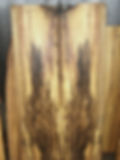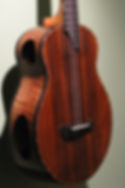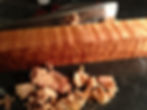Double click to enlarge.
WOODS
Paragraph. Click here to add your own text and edit me. It’s easy. Just click “Edit Text” or double
click me and you can start adding your own content and make changes to the font. Feel free to drag
and drop me anywhere you like on your page.


















































The design of an instrument and the execution by the builder is far more important than the woods used.
Woods do contribute to tone, especially in the soundboard, but this varies greatly by the individually selected piece of wood used, and more so, how it is used. It is more meaningful to talk about the design, shape, and size of an instrument and how it is built by a luthier to define its voice than the woods selected. The choice of woods will be one element that affects the sound, but only one element. Soundboard wood is much more important to the tone of an instrument, up to 80 percent, than the wood used for the back and sides, but these parts do make an audible difference when paired to the construction details.
My focus and intent is to offer only the finest tonewoods "available" today, while minimizing the impact on the environment. Towards this goal, tonewoods are used that are either pre-banned harvested, currently sustainable, or can be harvested in a sustainable fashion. I only use the highest quaility hand selected woods in terms of tone, strength, and stability. Every set of wood I use is individually tested for ideal stiffness related to the build, flexibility, tone generation, and is selected or rejected for the standards of instruments I build. 80% of my wood suppliers are within a five hour drive, and I know them all personally. This affords me the opportunity to hand select the material used.
Every individual tree has it's own voice. Every board it's own tonal characteristic, much like cultures, yet each piece of wood is as unique as you or me. It is too vague a comment to say one species of wood will contribute a specific tonal consideration over another, without involving testing and critical selection of each individual pieces of wood.
Part of the obligation and passion of the luthier is to recognize those individual characteristics of each board, and chose the best as it may contribute to the foundation of your instrument.
There really isn't a shortage of fine tonewoods, unless you want every instrument to look the same as those woods that have been historically over harvested.
There is a very deep and wide selection of tonewoods from all over our planet today. Only the standardized or over-harvested tonewoods are dwindling. Numerous tradition tonewoods have been banned from harvest for decades, and others are restricted. While tradition promoted the higher standards of tonewood, that doesn't mean there weren't equal substitutions. It just meant that manufacturing plants wanted constant supplies. Well, there are very high quality "alternative" tonewoods available.
"Alternative" does not mean a lesser substitution. They may be more limited, more costly at times and harder to come by, though many are sustainable.
Many other figured Master Grade woods for backs & sides are available: Macassar Ebony, Wenge, Black and White Laotian Ebony, Ziricote, Dragonwood, East Indian Rosewood, African Blackwood, Santos Rosewood, Cocobolo Rosewood, Oregon Bastogne Walnut, Oregon Myrtle, Pau Ferro/Palo Santos, Granadillo, Hawaiian Koa, Curly Port Orford Cedar, Curly Lacewood, Leopardwood, Palo Escrito, Plum Quilted Guatemalan Mahogany, Chocolate Striped Mango, Black Limba, Movingue, Honduran Mahogany, Cuban Mahogany, Ovangkol/Shedua/Amazonique, Figured & Quilted Maples, Beeswing German Pear, Waterfall Bubinga, and Goncalo Alvez to name a few.
